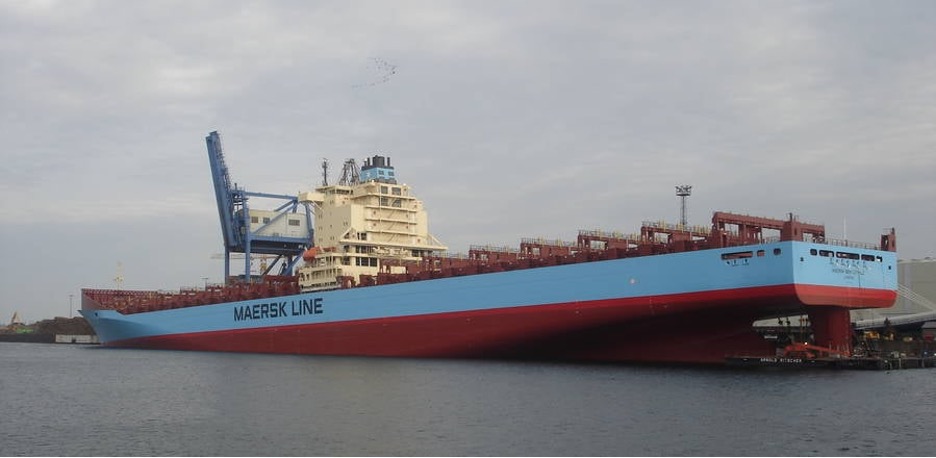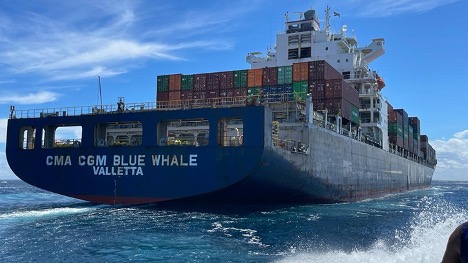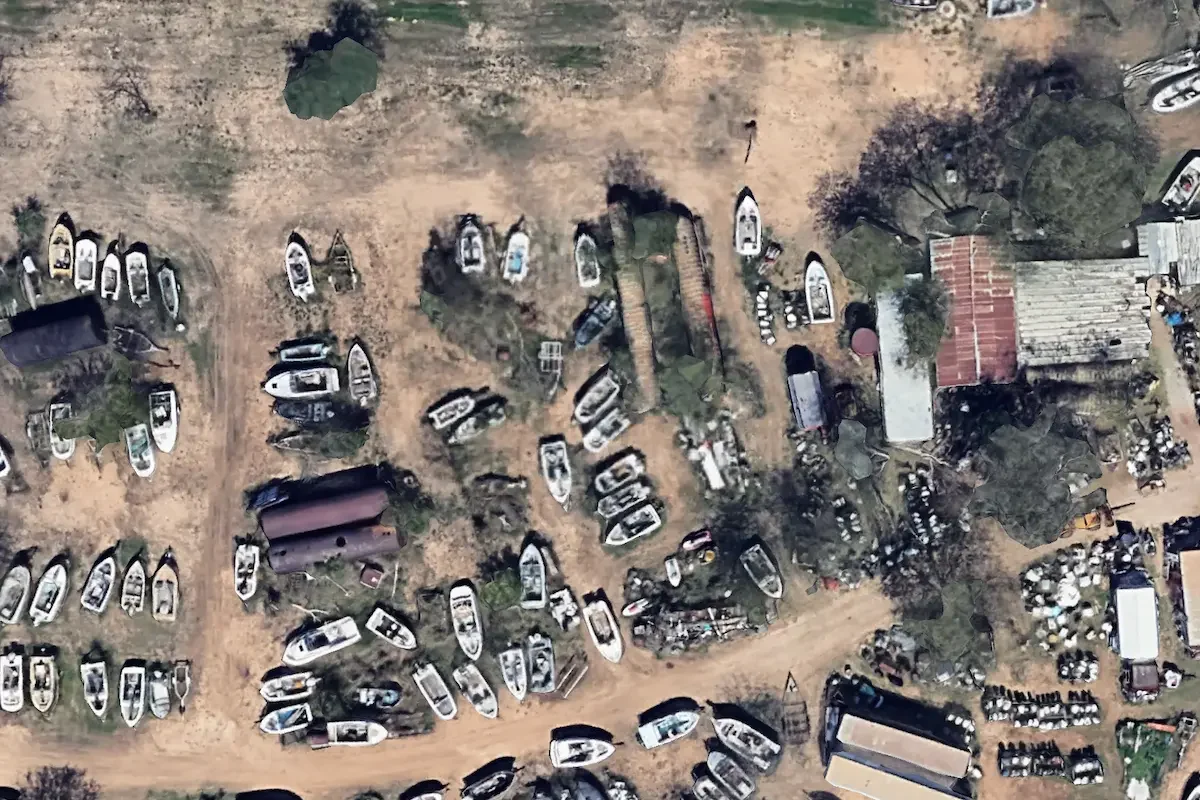Ships operate in a liquid medium- water, which means their profile in the water they operate in determines how they behave. One such profile is the vessel’s trim which will determine the way the forces from the water will affect the vessel’s movement.
The vessel’s trim will therefore affect her handling and sea-keeping characteristics as these are mainly the result of the various hydrostatic force acting on her and as a rule trim by head is avoided.
Trim is defined as the difference in draft fore and aft. It is also the term used to describe the fore-aft transverse inclination of a vessel’s keel. Trim by the head is when the ship’s stem is lower in the water than the stern.
The trim of a vessel, therefore, has a significant impact on her energy demand for propulsion while steaming, with the most efficient trim for a specific ship being determined by her design, operational draft, and speed. In this write-up, I will explain the important role trim plays in a vessel’s operations. the purpose of ship trim and why ships avoid trim by the head.

What is the Trim of a Ship?
Trim is the difference between forward and aft draughts. The ship is said to be on an even keel when the forward and aft draughts are the same. When loading and/or ballasting the ship, trim is an important consideration. A small trim by the stern is desirable because most ships will perform better in a seaway in this condition.
Head Trim.
A trim by the head occurs when the moments due to the weights (cargo plus the weight of the ship) about the center of flotation exceeds the moments for the force of flotation. In such cases, the center of flotation moves forward to be in line with the force of gravity and this will result in a deeper forward draft.

The force of buoyancy (acting upwards) moves forward to be in line with the force of gravity and results in an increase in forward draft
Stern Trim
A trim by the stern occurs when the moments due to the weights (cargo plus the weight of the ship) about the center of flotation exceeds the moments for the force of flotation. In such cases, the center of flotation moves aft to be in line with the force of gravity and this will result in a deeper aft draft.
The force of buoyancy (acting upwards) moves aft to be in line with the force of gravity and results in an increase in the stern draft
Even Keel.
There are times when a ship needs to pass through an area on an even keel. This requires the drafts forward and aft to be equal. In such a situation weights (ballast) is moved from the area of the deeper draft forward or aft to make the two drafts equal.
What is The Purpose of Ship Trim?
The term “trim” refers to the fore-and-aft balance of a ship It is the difference between the draft forward and aft. When a vessel is properly trimmed, her stern sits lower in the water than her bow, which gives her more speed and maneuverability. The word “trim” can also be used to refer to the act of adjusting a ship’s ballast to achieve this ideal balance.
How Does Trim Affect a Ship’s Performance?
Trim can affect a ship’s performance in two ways first, by changing its hydrodynamic characteristics; and second, by influencing how much weight is carried in each end of the vessel.
Improperly trimmed vessels often experience increased drag and reduced speed as a result of their inefficient shape. In addition, imbalanced weights can lead to rolling and instability, making it difficult for crew members to work or even stand on deck
Trim Optimization – Ship-board Energy Efficiency Measures.
Nowadays with an eye on fuel efficiency, ship operators are turning to advanced systems for monitoring ships to cut down costs. A method increasingly being used extensively to estimate optimal trim settings for energy efficiency is Computational Fluid Dynamics (CFD.
Most ships are built to carry a specific amount of cargo at a specific speed while consuming a specific amount of fuel under a specific trim condition. Trim, whether loaded or ballasted, has a significant impact on the resistance of the ship through water. Therefore, optimizing the trim can deliver significant savings.
There is a trim condition that provides the least amount of resistance for any given draft and speed. As a result, the optimal vessel trim is determined by draft and speed. The optimal trim of a ship can be determined as part of routine operations, through tank testing, or through the use of computational methods. Computational Fluid Dynamics (CFD) methods are now being used extensively to estimate optimal trim settings for energy efficiency
Trim optimization provides substantial economic benefits in terms of fuel savings. These economic benefits will differ depending on the size and type of ship. It should be emphasized that even minor trim adjustments can have a significant impact on vessel performance. Most literature refers to a potential fuel consumption reduction of 2% to 4%.
Trim must therefore be optimized before and during a ship’s voyage by properly loading the ship or using ballast water to achieve the most efficient floating position. Before a voyage, ships usually record their trim by directly reading the draft marks.
So, given that the ship’s weight distribution allows for trim adjustment, determining the appropriate and optimal floating position prior to the voyage becomes possible (this is referred to as “static trim” when the ship is not sailing).
However, knowing the exact trim and draught of a ship during a voyage is critical. The trim under operational conditions is known as “dynamic trim,” and it differs from “static trim” due to the influence of ship motion. Its measurement necessitates real-time readings from sensors and onboard data systems.
Ship Trim By Stern
While trim by stern is the ideal situation there are times when a vessel might have too much of a stern trim. This is not ideal and should be avoided. In such a situation because of the enormous wind area up front and the excessive depth of immersion towards the stern, the ship will be difficult to maneuver.
Also in severe weather, there is a possibility that pitching will be excessive, creating considerable panting and pounding. This happens especially when the forward draft is too small. This might lead to structural damage.
Forward, there will be a significant blind spot, which, in the case of a ship with an after the bridge, will make piloting more difficult and reduce the efficiency of the lookouts.
Why is Trim by Head Avoided?
Trim by head is when a ship’s stern sits higher in the water than her bow. It is usually caused by an uneven distribution of weight on the vessel. There are several reasons why trim by head is avoided. First, a ship down by the head might have her propeller not fully immersed which means the efficiency of the propeller will be reduced. That translates into less speed.

In “trim by head” situation when the ship is in light condition and starts pitching her propeller will be coming out intermittently and will “race”. This, combined with increased vibration, has the potential to damage the propeller shaft. In heavy weather, a ship down by the head has the tendency to ship green seas forward which might result in structural damage at the forward part of a vessel.
A ship down by the head might have only a part of the ship rudder immersed which will reduce the effectiveness of the rudder and make the ship difficult to steer. Difficulty in steering might lead to the ship broaching-to, a situation which results when the ship turns sideways onto the wind and is unable to turn into the wind because the rudder has lost its effectiveness.
Because tank suctions are sited at the aft end of tanks, a head trim will make these impossible to empty completely. In heavy weather for example, a tank might lose suction at a critical time with serious consequences, such as a blackout. Trimming by head makes a ship slower and less maneuverable, so trim by head is generally avoided
Conclusion
In conclusion, ship trim is an important aspect of a ship’s performance. Improper ship trim can have consequences such as decreased speed, reduced fuel efficiency, and even instability. While it is sometimes necessary to purposely trim by head, it is generally avoided due to the potential risks involved. Some general guidelines for maintaining proper ship trim include monitoring the ship’s drafts, ensuring that cargo is evenly distributed, and avoiding excessive speed, especially when in shallow water.
There is a smattering of evidence suggesting that trimming can result in significant fuel savings. Ship resistance is affected by a vessel’s trim via viscous resistance, which is proportional to the wetted hull surface area. Trim changes will affect the wetted surface area and thus hull resistance. By definition, as resistance rises, so will fuel consumption and emissions.
- Wind-Assisted Propulsion Systems (WAPS): A Game Changer for Maritime Decarbonization – February 6, 2025
- 10 Boat Salvage Yards in California – January 25, 2025
- 13 Boat Salvage Yards in Texas – January 18, 2025





